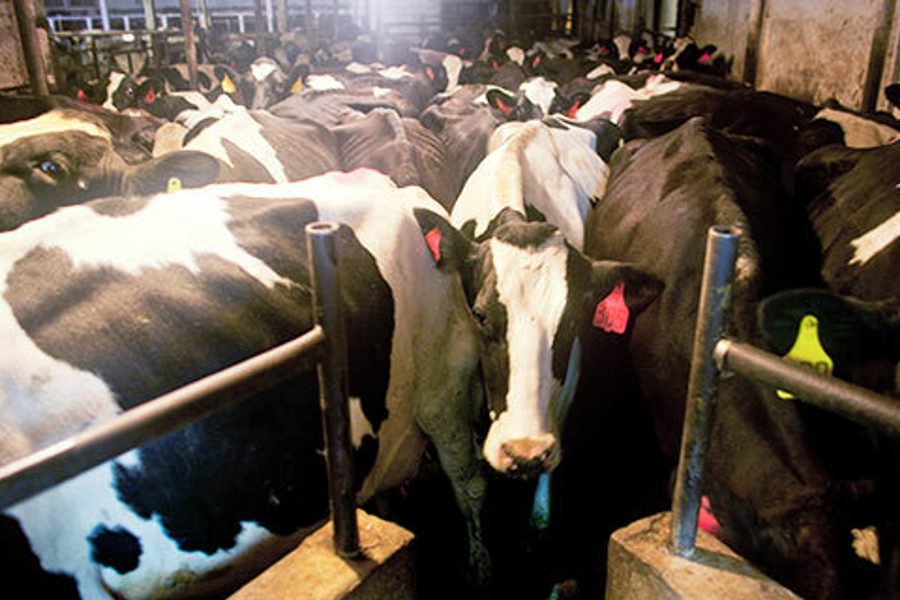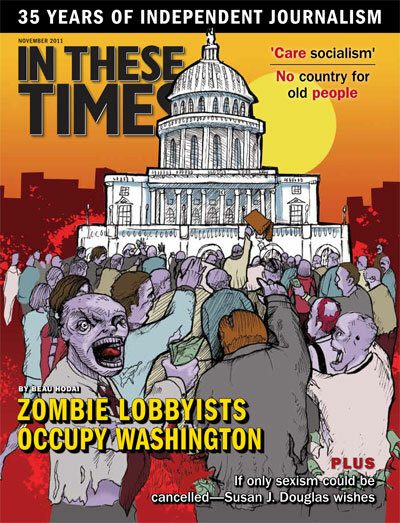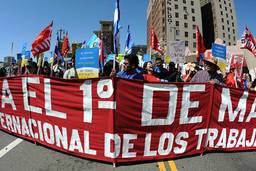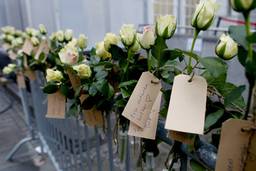Citizens Stop Factory Farm
Grassroots activists successfully challenge a dairy magnate’s right to build a 5,500 cow mega-facility.
Patrick Glennon

On September 7, regulators at the Illinois Environmental Protection Agency denied a water quality certification permit to a proposed mega-farm, Tradition Dairy. By withholding the permit, the agency effectively halted the industrial feedlot from securing a permit from the U.S. Army Corps of Engineers, which is necessary for the project to continue.
Located a mile outside the town of Nora in northwestern Illinois, the property is owned by Californian mega-dairy magnate A.J. Bos. Were it to open, the farm would be the largest in the state, with an initial 5,500 cows and the operational capacity to expand over time.
The project, first announced in 2007, fell under intense scrutiny last October when a purple liquid was found discharged into the Apple River, a tributary of the Mississippi. A swift backlash followed: Grassroots activist group Helping Others Maintain Environmental Standards (HOMES) took legal action against the farm’s parent company, Tradition Investments; Illinois Attorney General Lisa Madigan issued a complaint and lawsuit against the enterprise; and Democratic Gov. Pat Quinn lobbied on behalf of HOMES, throwing his weight behind the group’s fight against industrial farming.
These efforts have so far paid off, though a member of Tradition Dairy’s legal team has vowed to appeal what he calls a political decision by the IEPA.
The size of the proposed mega-dairy fits the technical definition of a Concentrated Animal Feeding Operation (CAFO), the label attributed to agricultural projects maintaining large volumes of livestock that are industrially organized and processed. Unlike traditional, small-farm grazing methods, these enterprises confine their animals into tight, often cruel indoor environments.
The byproduct of CAFOs is a deadly combination of accumulated animal waste (more toxic than urban sewage) and chemicals used in industrial farming (such as antibiotics and insecticides). A study by the University of Iowa shows that children raised near CAFOs have asthma rates of about 24 percent, compared to an 11-percent average for communities outside their pollutants’ reach. Other medical problems traced to industrial farming include (but are not limited to): chronic bronchitis, headache, periodic bloody nose, sore throat, excessive coughing, diarrhea and burning eyes.
The true cost of these capital-saving methods is deflected onto the public, which ultimately pays for the industry’s ability to operate so cheaply through higher medical bills and land degradation.
A report by John Kilpatrick published in The Appraisal Journal finds that CAFOs can diminish nearby land values by 50 to 90 percent. Considering that the areas affected are generally lower-income, the overall effect is economically and socially disastrous.
If A.J. Bos’ past is any indication, Tradition Dairy would likely follow these destructive trends.
In 2001, Bos entered a joint venture with Ron Offutt of Three Mile Canyon, establishing a milk operation in Oregon called Columbia River Dairy. Over the last decade, workers have accused Three Mile Canyon and Columbia of numerous offences: sub-minimum wage pay, intimidation of unionized employees, untreated cows with infected udders, sexual discrimination, capricious firings and failure to pay overtime. In 2005, the EPA considered the farm the third-largest producer of ammonia in the United States.
Concerned locals sought reassurance from Bos, meeting him at the Nora Bar (last of its kind in the town, pop. 121). “He didn’t answer our questions,” says Jennifer Heidenreich, an area mother and member of HOMES. She and other like-minded residents are further dismayed at how the ongoing conflict is depicted. “This thing has been portrayed as the town folks versus the farms, and that’s just not so.”
Indeed, the locals fighting the mega-dairy have food production on their list of top priorities. “Factory farms hurt the small farmer,” says Jim Francis, another nearby resident.
Yet despite these concerns and the overwhelming amount of research corroborating its projected impact, the mega-dairy still has allies, some of whom accuse Gov. Quinn of sacrificing jobs in order to generate approval among his voter base. State Rep. Jim Sacia ®, who has received more than $16,000 in campaign funding from the agricultural industry since 2001, called the decision a political maneuver directed by “motives [that are] highly questionable.” Bos’ lawyer echoed this line of argument, bemoaning the loss of jobs for political gain.
The factory would produce about 40 jobs – the majority of which would pay around (or even below) minimum wage.







